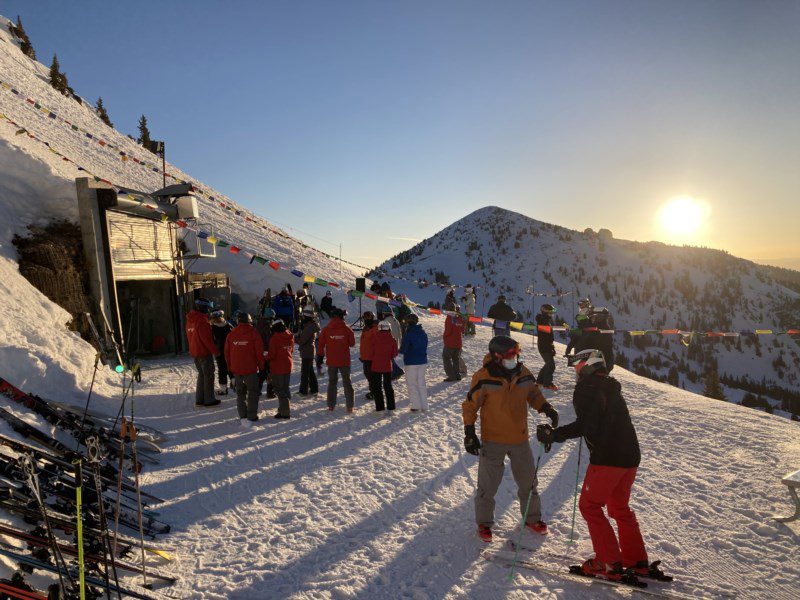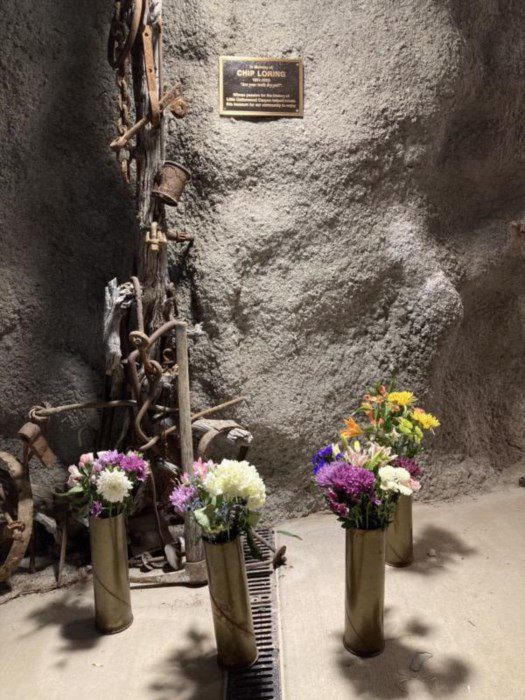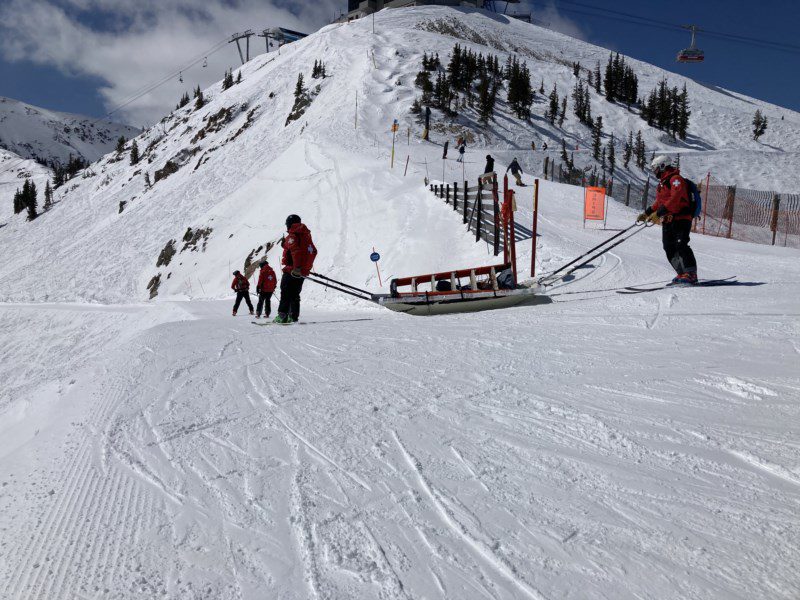
It was a glorious, though too warm, spring morning today as the sun crested the Mount Sugarloaf shoulder and shone brightly down on the small crowd holding a memorial service for Snowbird’s own Chip Loring who passed away in 2020. Chip was a long-time instructor with the Mountain School and fervent collector of relics from within the canyon walls of Little Cottonwood. He’ll be missed by many.

Inside the tunnel work continues as those of us who find rust and iron an interesting part of history remove items that previously cluttered the tunnel and relocate those that remain to form a more logical chronology. This begins at the entrance with the equestrian artifacts and progresses into the heart of what was Little Cottonwood Canyon’s longest running human activity to date: mining.
There are additional (and classified top secret) plans for more changes with the mine equipment but sadly for readers of this space, they most remain compartmented for the time being.
The big news, however, is the arrival of a US Marine Corps M-20 75mm recoilless rifle that now occupies the alcove near the south entrance of the tunnel. The rifle was discovered and procured by a devilishly handsome local (who wishes to remain anonymous) and delivered to your loyal team of volunteers for placement within the museum. Big thanks to Scott from Snowbird’s fabrication shop for making the mount on which the weapon now rests. Also thanks again to Keith Hanson of Salt Lake County District 3 Water and ski patroller Sean and gunner Brian for the assist with sledding the rifle to the tunnel from Hidden Peak and helping with mounting.


The rifle itself is the same type (along with 106mm versions) that were used by Snowbird and Alta until about a decade ago for avalanche control. The only weapons left in the canyon are the 105mm howitzers, which while very cool, were too expensive to procure for the museum and too large for the space available in the alcove. The display rifle started out in the Pacific Theater during WWII before finding its way into a collector’s hands, who parted with it reluctantly but in the end agreed its place of honor in the Peruvian Tunnel was a better permanent location.

Stay tuned for more developments in the tunnel as Keith and your loyal correspondent continue to make improvements and scheme (in secret) to make the museum a destination for tourists and locals alike to enjoy not only the Wasatch Mountains, but the history of this most unique canyon.
